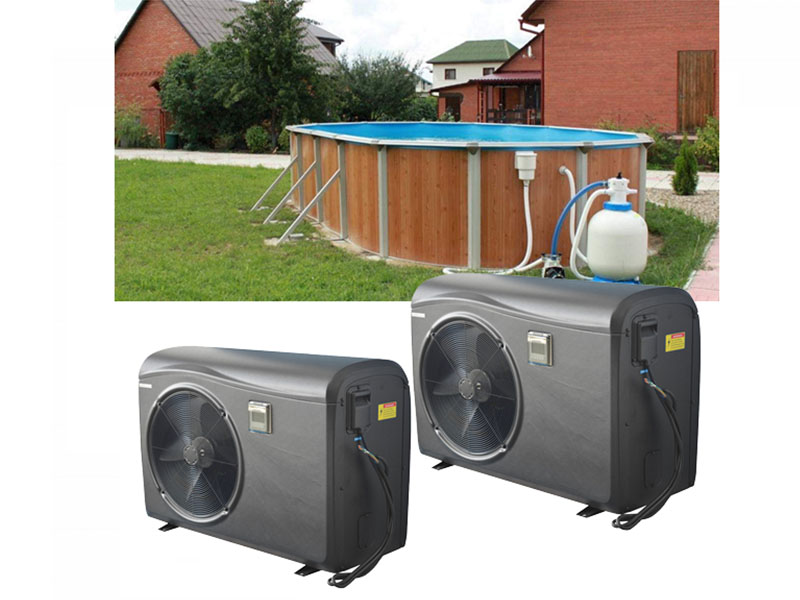Swimming with a warm pool is a wonderful feeling, but without heating the pool, many pool owners only can swimming in spring or early summer through to autumn. Thus to extend the swimming season, pool heating is a must.
The next question is “How to reduce the cost of heating my swimming pool?”
There are two factors need to consider,
How to reduce the cost of the energy used to heat the pool,
How to reduce the amount of heat a pool loses ,If it loses less heat in the first place, a pool will cost less to keep warm because it needs less energy to maintain a constant and comfortable temperature after the initial heat-up period.
Each pool environment is different, so while the savings for each tip are universal in the scheme of things, they are not all universally applicable to a particular pool. Here are ten tips that will help save energy and money on pool heating costs and even if some will save more than others, each tip on their own will save on energy use to some percent – And as they say, there’s no such thing as a small economy!
Tips to reduce energy use by good pool design
1) Pool Insulation to reduce heat loss:
When planning a pool, think insulation. All pool designs, including a Natural pool or swimming pond, can benefit by incorporating some rigid panel insulation under and around the structure of a pool to save energy and costs in the long run. Regardless of where you are in the USA or Canada the ambient temperature of the ground is pretty constant, and it’s usually colder than the ideal temperature for enjoying a swim in the pool, so putting some insulation outside the thermal mass of the water retaining structure is a great first step in reducing the costs associated with heating a pool over the long term.
2) Optimize Pool Mechanical Systems -
A well planned pool pump and filtration system helps energy efficiency & saves money. Plan from the beginning for extra valves to be fitted in pipe runs so that additional pool heating systems like a heat pump or solar panels can be easily retrofitted or drained down for winterizing in the future. A little more thought at the planning and installation phase always saves money in the long-term .
3) Pool cover to keep the water temp and reduce the loss.
4) Find a green and energy saving way to heat the pool.
Heat pump pool heaters are really energy efficient and the energy efficiency of a heat pump pool heater is measured by the coefficient of performance (COP). The higher the COP for the pool heater, the more energy efficient it is. Typically, COP is measured by testing a heat pump pool heater with an outdoor temperature of 80 degrees. COPs usually range from 3.0 to 7.0, which equates to a multiplying factor of around 500%. This means that for every unit of electricity it takes to run a compressor, you get 3-7 units of heat from it. This is why fitting the right size of heat pump for your pool is of primary importance for optimum efficiency and to minimize energy costs. Sizing a heat pump pool heater involves many different factors so whenever you’re sizing a heat pump, the surface area of the pool is taken into consideration. Basically, a heater is sized based on the surface area of the pool and the difference between the pool and the average air temperatures.
The variables for pool heating:
- Wind exposure factors
- Humidity levels for the area
- The Cooling factor in areas of lower night-time temperatures
Heat pump pool heaters are rated by Btu output and horsepower (hp). Standard sizes include 3.5 hp/75,000 Btu, 5 hp/100,000 Btu, and 6 hp/125,000 Btu. To calculate heater size for an outdoor swimming pool, follow these steps to give an approximate required rating:
- Decide the preferred swimming pool temperature.
- Define the average outside temperature for the coldest month for pool use.
- Subtract the average temperature for the coldest month from the preferred pool temperature to give the temperature rise needed.
- Calculate the surface area of the pool in square feet.
Apply this formula to calculate the Btu/hour output rating of the pool heater needed:
Pool Area x Temperature Rise x 12 = Btu/h
This formula is based on 1º to 1-1/4ºF temperature rise per hour and a 3-1/2 mile per hour average wind at the pool surface. For a 1-1/2ºF rise multiply by 1.5. For a 2ºF rise multiply by 2.0.
Conclusion?
Contact us for a high COP heat pump to heat your pool.
Post time: Jun-11-2022


